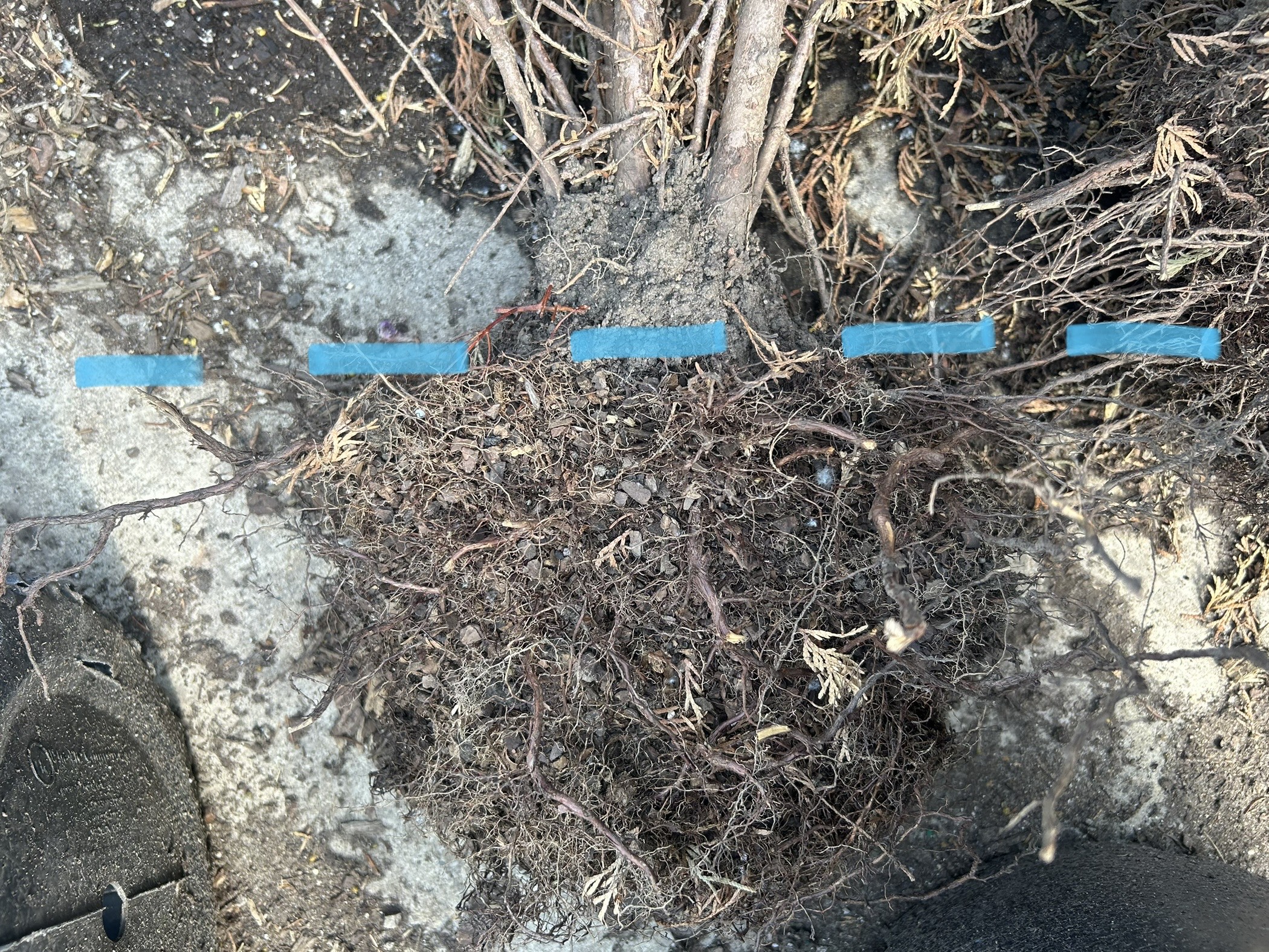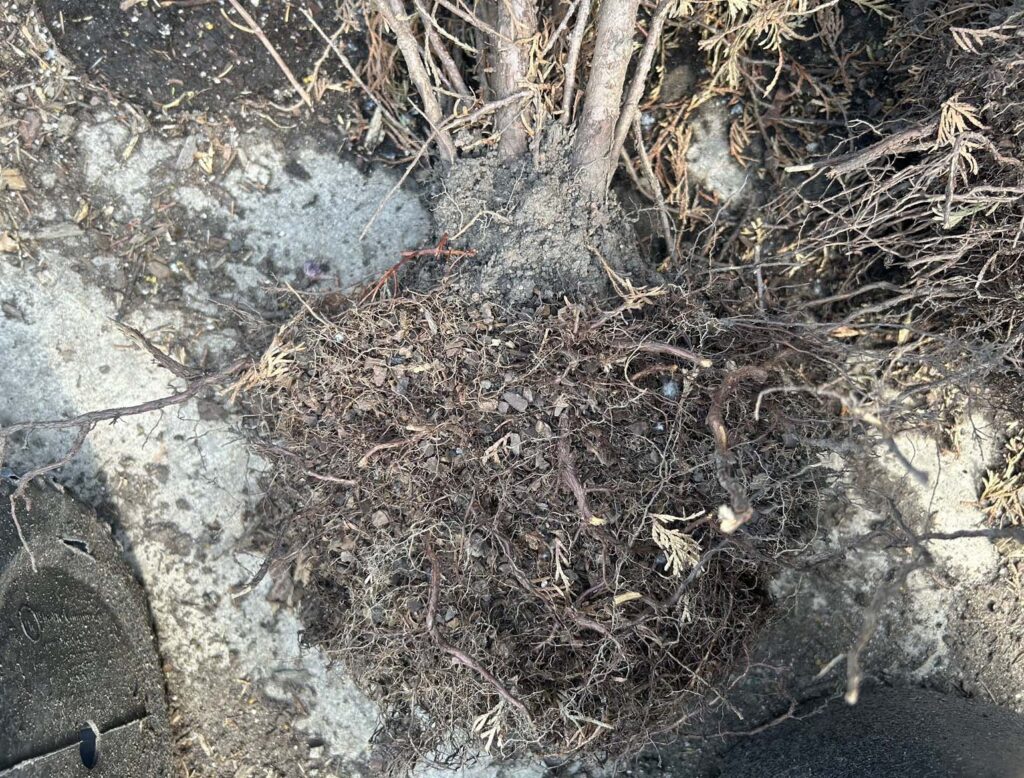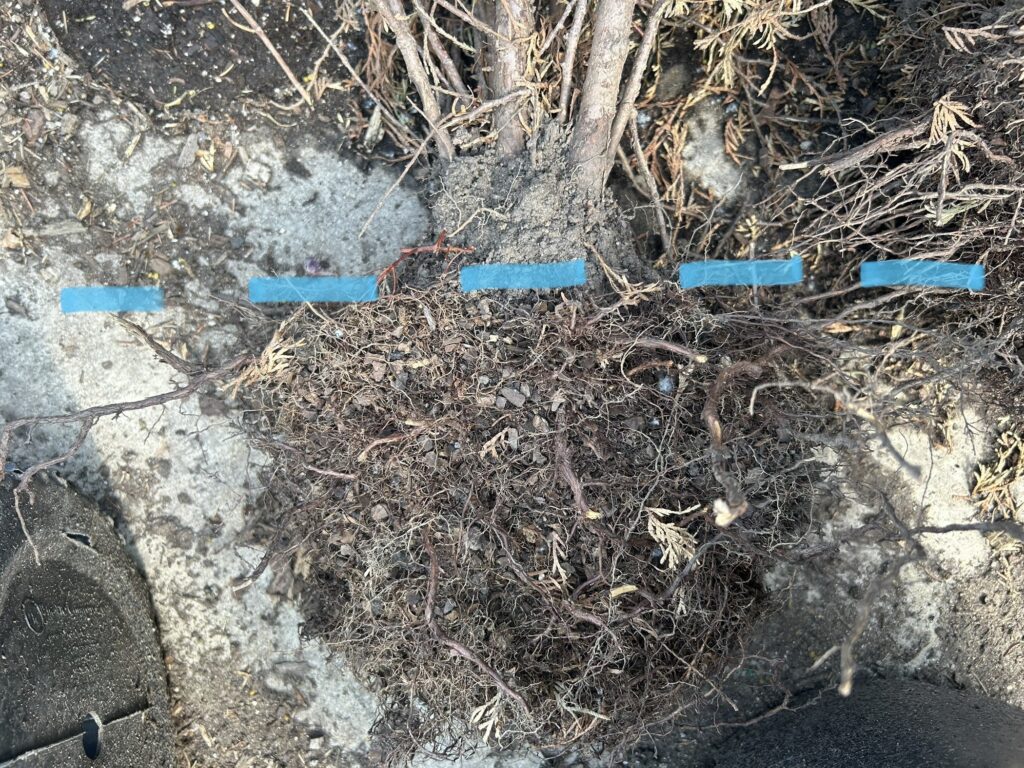

There is an old expression in the green industry that, while over-simplified, still has value: “Plant too high, plant won’t die. Plant too low, plant won’t grow!”
Both planting too shallow and planting too deep can be problematic. This post will address the issue of planting too deep, which contributes to the decline and failure of landscape trees and shrubs. The good news: this can be avoided completely by planting at the correct depth!
You might be asking yourself: “How can I tell if my tree or shrub is planted too deep”?



Here is a textbook example of planting too deep. An arborvitae was killed by being planted FAR too deep. You can clearly see the “soil above our soil” – soil that is piled far above the root ball and potting media. The blue line indicates the appropriate soil level. This evergreen was planted at least 4-6” too deep (circled in red).
If you have noticed trees on your property that were planted too deep, is there anything you can do to help them survive? Possibly!
Solutions for planting too deep include replanting and root collar excavation. If a tree or shrub was planted recently enough, it can usually be lifted and replanted. In some cases, it is possible to remove excess soil and mulch from around the root collar.
A pamphlet from the Brown County UW-Extension defines the root collar as “the interface region of the tree trunk and root system where the trunk flares up near the soil line.” This flare should be visible and exposed to oxygen – not buried under soil or covered by mulch. When a tree is planted too deep, roots which grow horizontally stay deeper than they need to be to take in air and allow the tree to respirate.
There are numerous potential consequences of planting too deep. It can have negative effects on tree growth, including root defects such as girdling, circling, or kinked roots. Growth of the tree may occur more slowly and/or leaves may be lost early in Autumn. At its worst, planting too deep may result in premature death.
While girdling roots are located below the surface and we are not blessed with x-ray vision, many trees with girdling roots will have a flat side in the trunk. This is a helpful visual diagnostic that can point to a problem underground.